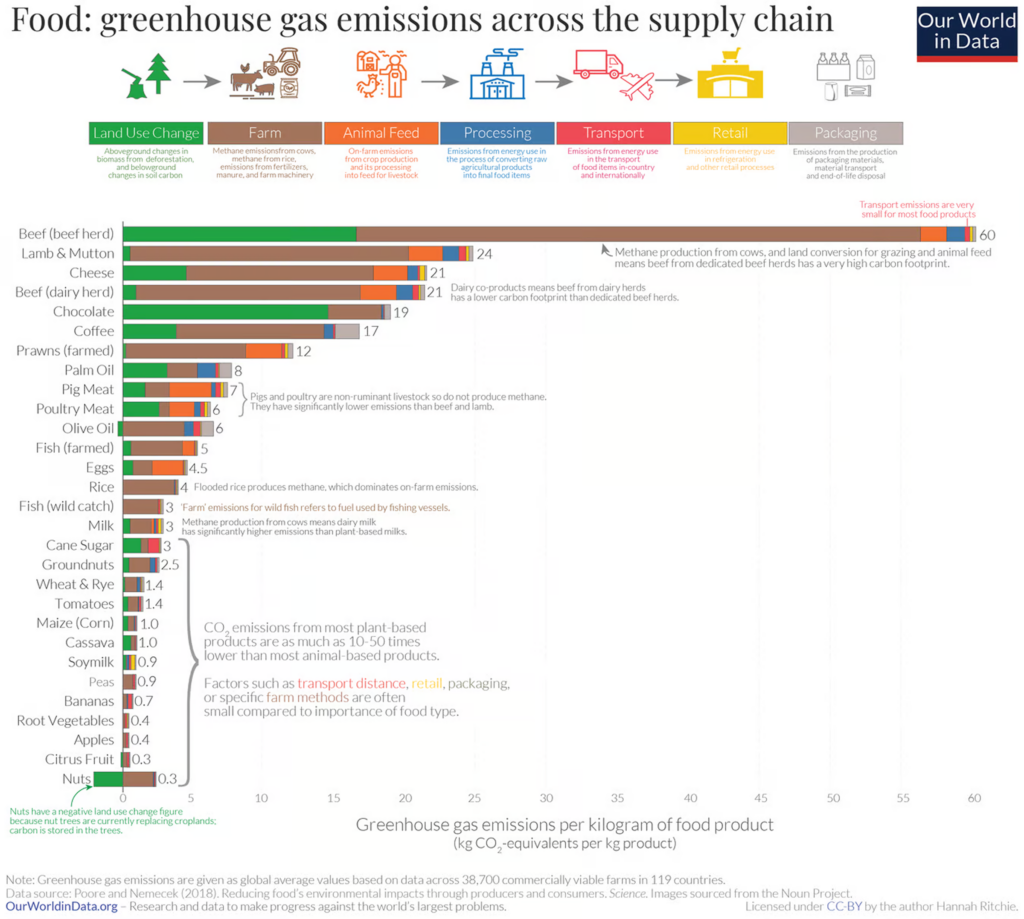May 15, 2023
Food Choices vs. Eating Local
The Climate Impact of Your Plate

Photo from Erik Scheel
We love celebrating food as a source of connection, creativity, and sustainability. But as we think about how to reduce our environmental impact, it’s worth asking: what’s more important—choosing local ingredients or focusing on the types of food we eat?
The data from Our World in Data reveals an unexpected truth: while eating local has benefits, the types of food we choose make a much bigger impact on our planet. Let’s dive into why this matters and how it shapes our decisions at ToKoKo.
Food Miles: Not the Biggest Slice of the Emissions Pie
When we think about reducing our food’s environmental impact, eating locally often comes to mind. It feels intuitive—less travel should mean fewer emissions, right?
Surprisingly, transportation accounts for only 6% of food’s total emissions on average. The majority of the climate impact comes from what we eat, not where it comes from. In fact:
- 83% of food’s emissions are tied to production—farming, processing, and land use.
- For certain foods, like beef, lamb, and dairy, emissions from production far outweigh those from transport.
This doesn’t mean local food isn’t valuable—it can support regional economies and build resilient food systems. But if we’re aiming to lower carbon emissions, changing what we eat has a much greater impact.

Choosing Foods with a Lighter Footprint
So, which foods have the smallest carbon footprints?
Plant-based foods like vegetables, grains, and legumes consistently outperform animal-based products in terms of emissions. For example:
- Beef produces 60 kg of CO₂-equivalents per kilogram—more than any other food.
- Lentils and peas, by contrast, produce just 0.9 kg of CO₂-equivalents per kilogram.
- Even cheese and eggs, often seen as less intensive than meat, have significantly higher emissions than plant-based options.
At ToKoKo, our decision to focus on vegan cooking isn’t just about inclusivity—it’s a deliberate choice to reduce the environmental footprint of our meals.
The Land Use Factor
Beyond emissions, food production also impacts land use. Livestock farming occupies 77% of global agricultural land while providing only 18% of our calories. Switching to plant-based diets could free up vast amounts of land for reforestation and biodiversity, amplifying the environmental benefits.
The Role of Local Food in Sustainable Kitchens
While food choice matters more for the climate, local food still plays an essential role in sustainable food systems:
- Freshness: Local food often requires less packaging and processing.
- Community resilience: Supporting local farmers strengthens regional economies.
- Cultural preservation: It keeps traditional crops and recipes alive.
ToKoKo’s Takeaway: Eat Plants, Think Local
The data is clear: focusing on plant-based foods has the greatest impact on reducing our kitchen’s carbon footprint. But this doesn’t mean abandoning local food—it means being intentional about combining low-impact ingredients with seasonal, regional choices.
At our KüFas, we’re committed to offering dishes that are both sustainable and delicious. By choosing vegetables, grains, and legumes as the heart of our meals.
Ready to Try It?
Join us at our next KüFa event to see how we put these principles into practice! Whether it’s a hearty lentil stew or a creative veggie stir-fry, you’ll taste how sustainability and flavor go hand in hand.


